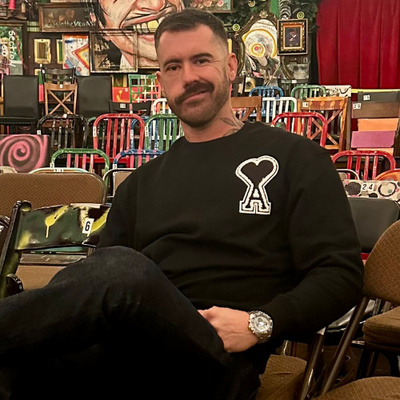Normalizing Rescue Plans within the Circus Community
For the circus community in Las Vegas, production shows carry a prominent corporate structure based on the glamorous and conglomerate casino resorts they reside in. Having a more technically advanced stage and/or automated flying systems in grandiose rooms can result in added safety conversations that may not be had in smaller productions. These initial conversations often stem from a legal and liability perspective, but often become normalized with the goal of rehearsing them regularly so as to remain prepared in a worst-case scenario. Aerial rescue training is common within huge production shows but far less common globally in more traditional-styled circus shows and, even more so, for tent shows.
In my 18 years working in circus-styled live entertainment, I remain perplexed at how many circus performers find it unsettling to prepare for emergency situations. I have found a common mindset from circus performers to be “If you speak of it, it will come to fruition” and, in turn, rescue training and emergency preparedness are often seen as self-fulfilling prophecies. As the technical director for a successful tent-based production show, it is my goal to eliminate these mindsets through open communication, ongoing education, rescue plan trainings, and rehearsals.

As performer flying and aerial stunts have evolved through the years, it is expected that whenever a performer is suspended, a trained rigger is collaborating in the safe operations of that lift. As an act goes into a show or a new room, it is also expected that a rescue plan is in place and the rigger and performer are well-versed in those plans. Throughout my career, I have found crafting strong relationships on the other side of the curtain, with my teams and performers, incredibly valuable in building a solid foundation. These bonds and the confidence they instill assist in operations and, as a priority, maintain a high level of trust improving safety and business as a whole.
In the past two decades, I have implemented multiple types of rescue procedures for varying shows. The policies and procedures can be dramatically different depending on what type and size of room we are working in. While there are several ways of lowering a performer from a rig, determined by what equipment you have and are operating on, a winch brake release is often the most time-efficient and safest way of getting that individual down from being stuck at suspension. Depending on the nature of the rescue, given that the performer is conscious and physically capable, another popular rescue technique is a belayed rope rescue. This option, a preferred of mine, is where a rope is preset and running through the system near the performer’s aerial drop-down point. The rescue line can be operated from offstage and attached to a pin rail or any anchor point with a 5000 lb rating. The end of the rope could have a series of rigs attached to it to lower the performer, depending on the apparatus in use or if they are in a harness. If the performer is not attached to the rig, then a set of hand loops and etrier are a safe option. For this, the performer slides one hand into one of the hand loops and cinches it around their wrist. They are then clear to get off their rig and step into the etrier and second-hand loop to their comfort before coming in. If the performer is wearing a harness, then the end of the line could have a bridle with two carabiners attached to it. The performer can be trained to attach the bridle to their harness by having the rigger pick up the individual high enough to remove themselves from the performance line so they are solely on the rescue rope and bridle point. Once the performer is on the rescue line, they can give the rigger a clear signal that they are ready to be either lowered or raised to safety depending upon the emergency conditions. In a worst-case scenario, a rope access rescue may be necessary. If a performer is injured or unconscious and unable to assist in rescuing themselves, then a rope access-trained rigger may need to retrieve them. This is never a first-choice rescue plan due to the risk of placing another body in the air and, notably, the most time-consuming option due to the precautions necessary in retrieving another individual.
Communication is key to success and regular training sessions are not only paramount in keeping a team informed and on the same page but improving operations overall. During any rescue the leading rigger needs to be in communication with the rescuee, be it verbally or visually (ideally both); therefore, practicing these exchanges with one another is ideal. In addition, policies and procedures are created to have these plans in place not just for emergencies but for day-to-day activity as well. Also critical is to document policies and procedures and regularly review them, knowing that not all emergencies can be responded to in the same manner. Because of this variance, the trained rigger should be collaborating with the performer to ensure the best rescue option for the fault at hand; once again, highlighting why those relationships we build are so integral in making these situations run smoothly.
I know there are different experience levels in different venues and that it is not uncommon for a peer or fellow performer to run winch pendants in a small circus. And while I am not suggesting the industry needs to dramatically change, my goal is to bring awareness. I would like to start a conversation in safety preparedness, so I sincerely ask, how can you and your venue, make a difference?
All images are courtesy of the author....
Do you have a story to share? Submit your news story, article or press release.








